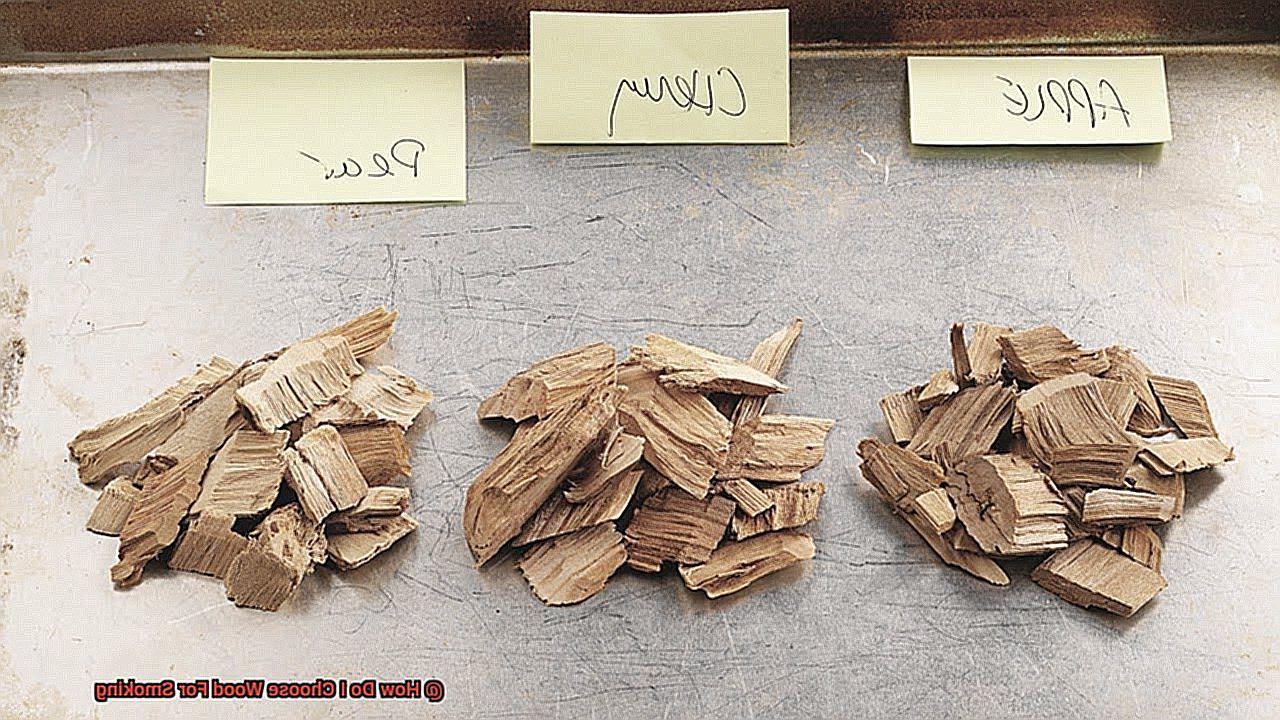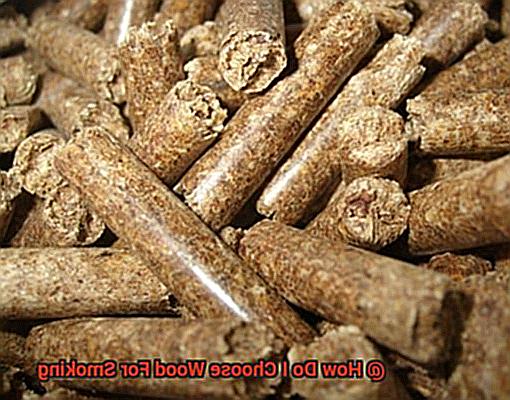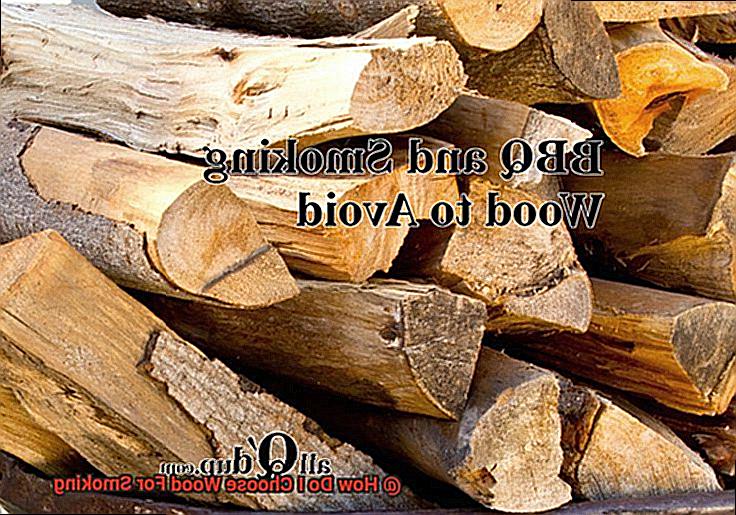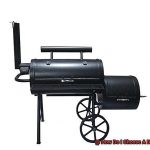Are you ready to elevate your barbecue game with the mouthwatering aromas and flavors of wood smoke? Choosing the right wood for smoking is just as crucial as selecting the perfect cut of meat. The type of wood you use can make or break your barbecuing experience, but with so many options available, it can be overwhelming to know where to start.
But don’t sweat it, fellow barbecue enthusiasts. In this blog post, we’ll dive deep into the world of wood smoking and provide you with all the knowledge you need to select the ideal wood for your smoker. Whether you’re a seasoned pitmaster or new to the game, we’ve got your back.
We’ll explore various types of wood and their unique flavors, as well as which meats they complement best. Additionally, we’ll delve into how to season and store your wood properly for optimal results.
So, grab those tongs and join us on this journey towards perfectly smoked meats bursting with flavor.
Contents
What Type of Meat Should I Smoke?
The type of wood used can significantly impact the flavor and aroma of the smoked meat. Here are some valuable tips on which type of wood to use for different types of meat:
- Beef: If you’re craving a bold and smoky flavor for your beef, hickory or mesquite wood is the way to go. These woods impart a rich, robust flavor that will leave your taste buds begging for more.
- Pork: For pork, fruitwoods like apple or cherry are excellent choices as they infuse the meat with a mild and sweet flavor that compliments the natural sweetness of pork.
- Poultry: Smoking poultry requires a mild wood that won’t overpower the delicate flavor of the meat. Fruitwoods such as apple or pecan produce subtle flavors that enhance the taste of poultry without overwhelming it.
- Fish: Alderwood is an ideal choice when smoking fish as it produces a light, almost invisible smoke that doesn’t mask the delicate taste of the fish.
- Game Meat: Game meats like venison or wild boar require a strong wood like hickory or oak to provide a bold and smoky flavor that can hold up against the gamey taste of the meat.
It’s also essential to consider the intensity and color of smoke produced by different types of wood. If you’re looking for a strong smoky flavor, then using a stronger wood like oak or hickory would be best. On the other hand, if you want a more subtle smoke flavor, then using a milder wood like alder or fruitwood would be better.
Different woods also produce different colors of smoke – mesquite, for instance, produces dark and heavy smoke while applewood produces light and almost invisible smoke. To achieve optimal results, it’s important to choose high-quality wood that is properly seasoned and free from chemicals or pesticides.
What Intensity of Smoke Flavor Do I Want?
If you want to take your grilling game to the next level, it’s essential to get the intensity of smoke flavor just right. But how do you do that?
Firstly, the type of wood you use can significantly impact the strength of your smoke flavor. Bold and robust flavors come from woods like hickory and mesquite, while fruitwoods such as apple and cherry are milder and sweeter. Before you start smoking, consider the flavor profile you want to achieve and select your wood accordingly.
Next up is the amount of wood used. Too much wood can result in an overpowering smoke flavor that’s unpleasant to taste, while too little may not impart enough smoke flavor to your meat. The key is finding the right balance for optimal smoke flavor.
Finally, smoking duration plays a critical role in determining the intensity of smoke flavor. The longer you smoke your meat, the stronger the smoke flavor will be. Keep an eye on your smoker and adjust as necessary to achieve your desired level of smoke flavor.
Quality of Wood Selection
Look no further than the quality of wood you’re using for smoking. Yes, it really does make a difference. Poor quality wood can ruin your hard work and even pose health risks. So, how do you ensure you’re selecting the best wood for smoking?
Firstly, hardwoods are the way to go. Oak, hickory, maple, and fruitwoods like apple and cherry are ideal due to their density and slow-burning properties. Softwoods contain more resin and sap which can negatively affect the flavor of your smoked meat.
But don’t stop there – ensure the wood is properly seasoned or dried. Green or freshly cut wood has too much moisture which results in excessive smoke and a bitter taste. Seasoned wood that’s been left to dry for at least six months is ready for smoking.
Where the wood comes from is also important. Avoid wood from orchards or yards that have been treated with pesticides or chemicals. Instead, source your wood from a trustworthy supplier who can guarantee it’s free from harmful chemicals.
Lastly, consider the size and shape of the wood. Smaller chunks burn quicker and produce more smoke, while larger pieces burn slower and produce less smoke. Experiment to find what works best for your smoking needs.
Size of Wood Pieces Needed for the Smoker
Firstly, consider your smoker type and size. For smaller electric smokers, smaller wood chips or chunks that can fit easily into the smoker’s tray or box are perfect. On the other hand, larger charcoal or wood-fired smokers require bigger logs or splits that can provide a longer burn time and more consistent heat.
Secondly, think about the size of the food you will be smoking. Smaller cuts of meat or vegetables will require smaller wood pieces, while larger cuts may need larger wood chunks or logs to maintain a consistent heat level and flavor profile.

Next, it’s important to consider the type of wood you are using and its smoke intensity. Some types of wood like hickory or mesquite can produce a strong smoke flavor even in small quantities, while others like fruitwoods such as apple or cherry may require larger pieces to achieve a desired level of smoke flavor.
To simplify this process, here is a brief summary:
- Small electric smokers: Use smaller wood chips or chunks.
- Large charcoal or wood-fired smokers: Use larger logs or splits.
- Smaller cuts of meat/vegetables: Use smaller wood pieces.
- Larger cuts of meat: Use larger wood chunks or logs.
- Strong smoke flavor woods: Use less wood.
- Mild smoke flavor woods: Use more wood.
Fruit Woods (Cherry and Apple) for Chicken and Pork
Take your meats to the next level with the sweet and subtle flavors of cherry and apple woods. As a seasoned expert, I can attest to the fact that these fruit woods are the perfect choice for smoking chicken and pork.
When it comes to smoking, the type of wood you use is just as important as the meat itself. Cherry and apple woods produce a mild smoke that delicately enhances the natural flavors of the meat without overpowering them. This allows you to add complexity to your dishes without sacrificing their delicious taste.
But not all wood is created equal. Freshly cut wood contains too much moisture and can produce a bitter smoke that ruins the flavor of your meats. To avoid this, it’s important to choose high-quality seasoned wood that has been properly dried and aged for at least six months.
Now let’s talk about why cherry and apple woods are specifically ideal for chicken and pork. Cherry wood is perfect for smoking chicken due to its mild sweetness and delicate aroma. It pairs well with other flavors like honey or mustard, and gives the meat a beautiful mahogany color. On the other hand, apple wood has a slightly sweeter flavor than cherry wood and is perfect for smoking pork. It adds a subtle fruitiness to the meat and creates a beautiful golden-brown crust.
But be careful not to overdo it with the smoke. Too much smoke or wood can cause dry and tough meat with an unpleasant aftertaste. A good rule of thumb is to use no more than two fist-sized chunks of wood per hour of cooking.
Stronger Woods (Mesquite or Hickory) for Beef
The answer lies in two of the strongest woods out there – mesquite and hickory.
Mesquite is famous for its bold and intense smokiness that can leave you feeling like you’ve been transported straight to Texas. It’s the perfect choice for those who love a strong and powerful flavor. This wood burns hot and fast, making it ideal for grilling and smoking beef cuts that require high heat. But be warned, mesquite can easily overpower the flavor of your beef if not used in moderation. To balance out its intensity, try mixing it with other woods.
On the other hand, hickory has a slightly milder flavor compared to mesquite but still delivers a sweet and smoky taste that pairs perfectly with beef. It’s a versatile wood that works wonders with different types of meat, including pork and poultry. Hickory burns slower than mesquite, making it perfect for low and slow cooking methods. However, using too much hickory can result in an overly smoky taste that can mask the natural flavors of your beef.
Ultimately, when it comes to choosing between mesquite and hickory for smoking beef, it all boils down to personal preference. If you’re all about bold flavors, then mesquite is the way to go. But if you prefer a slightly milder taste with undertones of sweetness, then hickory is your answer.
Experimenting with Different Types of Wood to Determine Taste Preference
Smoking meat is a culinary art that requires the right type of wood to produce the perfect smoky flavor. With so many different types of wood available, it can be overwhelming to determine which one is best for your taste preferences. Here are some tips on how to experiment with different types of wood to find your ideal combination:
Select your wood
Start by choosing a few types of wood, such as hickory, mesquite, applewood, or cherrywood. Each type has a unique flavor profile that can affect the taste and aroma of your meat.
Choose your meat
To conduct your experiment, select a cut of meat that you are familiar with and smoke it using one type of wood at a time. Take notes on the flavor and aroma of each batch.
Determine your desired smoke intensity
Consider how much smoke flavor you want in your dish. Some woods, like mesquite, produce a strong and intense smoke flavor, while others like cherrywood may produce a milder flavor. Experimenting with the amount of wood used and the length of smoking time can also affect the final outcome.
Mix and match
If you aren’t satisfied with the flavor profile, try using a different type of wood or mixing different types together to find the perfect balance. It may take several attempts to find the right combination that suits your taste preferences, but the end result will be worth it.

Consider the size and age of the wood
The size and age of the wood can also affect the intensity of the smoke flavor. Smaller chips or chunks will produce a more intense smoke flavor than larger logs, while older wood will produce a milder flavor than younger wood.
It’s also important to consider which types of wood work best with specific meats. For example, mesquite is often used with beef, while applewood is commonly used with pork. Experimenting with different types of wood is a process that requires patience and attention to detail. Keep notes on each batch of meat smoked with different types of wood, and don’t be afraid to continue experimenting until you find the perfect combination that suits your taste preferences.
Avoid Chemically Treated and Pesticide-Laden Woods
Not all woods are created equal, and some can even be harmful to your health. That’s why it’s important to avoid chemically treated and pesticide-laden woods when smoking.
Chemically treated woods, such as those soaked in creosote, release harmful chemicals when burned. These chemicals can contaminate your food and pose a risk to your health. Pesticide-laden woods are also a no-go, as the pesticides used to protect the trees from insects and pests can also be released when burned.
So how can you ensure that you’re using safe and healthy woods for smoking? Start by looking for wood that is specifically labeled as safe for smoking or grilling. Seek out options labeled as “natural” or “organic”, as these are less likely to have been treated with harmful chemicals or pesticides.
If you’re feeling adventurous, try sourcing your own wood from a trusted source. Talk to local farmers or foresters about their available woods and how they were grown and harvested. Opt for woods that were grown without the use of pesticides or chemicals.
He-Nw5-LMrE” >
Conclusion
In conclusion, selecting the right wood for smoking is a crucial step in achieving tantalizing aromas and mouthwatering flavors in your barbecue. The vast array of options may seem daunting at first, but fear not. By taking into account the type of meat you’ll be smoking, the level of smoke flavor you desire, and the quality of wood selection, you can take your grilling game to new heights.
Don’t be afraid to experiment with different woods to find your perfect combination that suits your taste buds. Keep track of each batch smoked with different types of wood, noting which ones work best with specific meats.
It’s important to steer clear of chemically treated or pesticide-laden woods when smoking as they can pose health risks. Always opt for natural or organic options labeled specifically for smoking or grilling.
With these tips and tricks in mind, you’ll be well on your way to selecting the ideal wood for your smoker and creating delectable dishes bursting with flavor.






